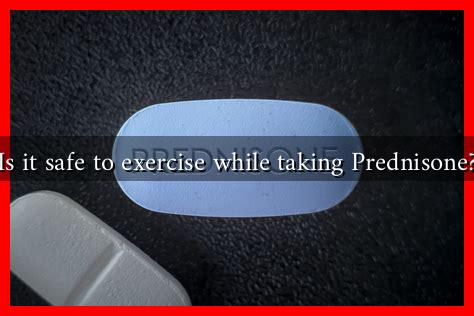-
Table of Contents
Is it Safe to Exercise While Taking Prednisone?
Prednisone is a corticosteroid medication commonly prescribed to treat a variety of conditions, including autoimmune diseases, allergies, and inflammation. While it can be effective in managing symptoms, many patients wonder about the implications of exercising while on this medication. This article explores the safety of exercising while taking prednisone, the potential benefits, and the precautions that should be taken.
Understanding Prednisone and Its Effects
Prednisone works by suppressing the immune system and reducing inflammation. While it can provide significant relief from symptoms, it also comes with a range of side effects, including:
- Weight gain
- Increased appetite
- Fluid retention
- Muscle weakness
- Bone density loss
- Increased risk of infections
These side effects can impact a person’s ability to exercise safely and effectively. Understanding these effects is crucial for anyone considering a workout regimen while on prednisone.
Benefits of Exercising While on Prednisone
Despite the potential side effects, exercising while taking prednisone can offer several benefits:
- Improved Mood: Exercise is known to release endorphins, which can help combat mood swings and depression often associated with chronic illness and medication.
- Weight Management: Regular physical activity can help mitigate weight gain, a common side effect of prednisone.
- Muscle Strength: Engaging in strength training can counteract muscle weakness and help maintain muscle mass.
- Bone Health: Weight-bearing exercises can help improve bone density, which is particularly important for those on long-term corticosteroid therapy.
Precautions to Take When Exercising on Prednisone
While exercise can be beneficial, it is essential to approach it with caution. Here are some precautions to consider:
- Consult Your Doctor: Always discuss your exercise plans with your healthcare provider, who can offer personalized advice based on your health status.
- Start Slow: If you are new to exercise or have been inactive, begin with low-impact activities such as walking or swimming.
- Stay Hydrated: Prednisone can cause fluid retention and dehydration. Ensure you drink plenty of water before, during, and after exercise.
- Monitor Your Body: Pay attention to how your body responds to exercise. If you experience unusual pain, fatigue, or other concerning symptoms, stop and consult your doctor.
- Avoid High-Impact Activities: Due to the risk of bone density loss, high-impact exercises like running or jumping may not be advisable.
Case Studies and Statistics
A study published in the Journal of Clinical Rheumatology found that patients with rheumatoid arthritis who engaged in regular physical activity reported improved physical function and reduced fatigue, even while on corticosteroids like prednisone. Another study indicated that patients who maintained a moderate exercise routine experienced fewer side effects related to weight gain and muscle weakness.
Statistics show that approximately 50% of patients on long-term corticosteroid therapy experience significant weight gain, which can lead to further health complications. Regular exercise can help mitigate these risks and improve overall health outcomes.
Conclusion
In conclusion, exercising while taking prednisone can be safe and beneficial, provided that individuals take the necessary precautions. The key is to consult with a healthcare provider, start slowly, and listen to your body. By doing so, patients can enjoy the physical and mental health benefits of exercise while managing the side effects of prednisone. Always remember that each person’s situation is unique, and what works for one individual may not be suitable for another. Prioritizing safety and health is paramount when navigating exercise routines on medication.




